Alienware m15 vs Razer Blade 15: Which OLED Gaming Laptop Is Best?
Here we are again. We’ve got two of the biggest players in the gaming laptop arena going head-to-head. Razer, the progenitor of the thin-and-light rig is no stranger to cramming, powerful specs into a thin, elegant chassis as demonstrated by the latest Blade 15. Alienware has also got into the swing of things, bringing its otherworldly aesthetic to the Alienware m15.
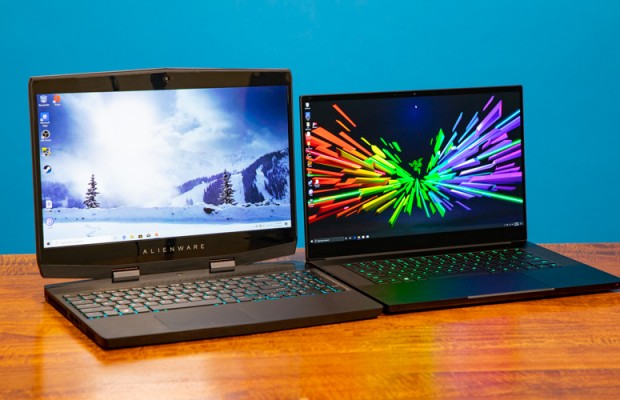
They’re both thin-and-light gaming systems loaded with powerful specs, but there’s a new wrinkle to consider in this battle: OLED. Both systems are equipped with breathtaking 4K OLED panels. But which laptop reigns supreme?
| Row 0 - Cell 0 | Alienware m15 | Razer Blade 15 |
| Starting Price (as configured) | $1,099.99 ($2,799.99) | $1,599.99 ($3,299.99) |
| Display | 15.6 inches 4K OLED 60Hz | 15.6 inches 4K OLED 60Hz Touch |
| CPU | 2.2-GHz Intel Core i7-8750H CPU | 2.6-GHz Intel Core i7-9750H processor |
| RAM | 16GB | 16GB |
| Storage | 500GB NVMe PCIe SSD | 512GB NVMe SSD |
| GPU | Nvidia GeForce RTX 2070 Max-Q GPU/Intel UHD 630 Graphics GPU | Nvidia GeForce RTX 2080 Max-Q GPU/Intel UHD 630 Graphics GPU |
| Key Travel/Actuation | 1.2mm/80g | 1mm/76g |
| Battery Life | 3:51 | 4:12 |
| Size | 14.9 x 9.9 x 0.7 inches | 13.9 x 9.3 x 0.7 inches |
| Weight | 4.8 pounds | 4.9 pounds |
Design
This is a hard one. The Blade 15 is an obsidian dream in its jet-black aluminum chassis. It’s got a boxy shape that’s retro, yet charming. The company’s shamrock green, tri-headed snake emblem glows devilishly. The interior offers more ebony goodness which allows the jewel-colored individually lit RGB keys to shine that much brighter.
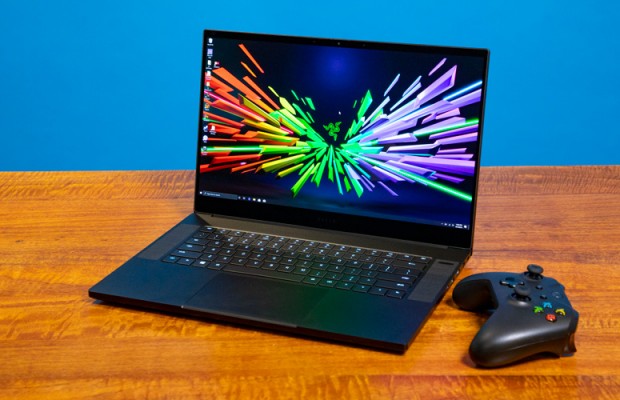
Meanwhile, you have the Alienware m15. Take some time to pour one out for this version of the m15 as it’s the last time you’ll see it. The company has rolled out its new Legend design, which is sleeker and lighter, thus retiring the classic Epic design. This is the last time you’ll see the Epic Gray anodized aluminum lid, black magnesium deck and strategically-placed lights.
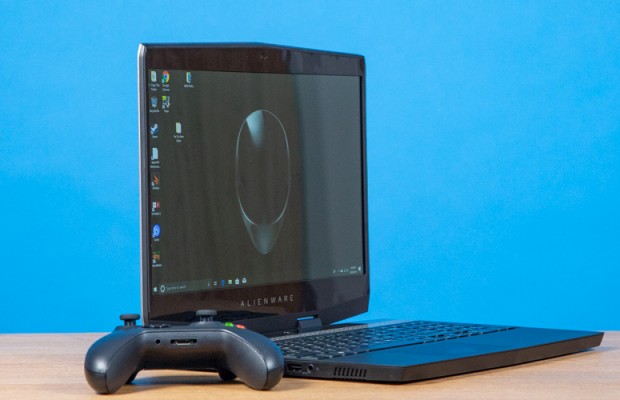
At 4.9 pounds, the Blade 15 (13.9 x 9.3 x 0.7 inches) is a little heavier than the Alienware m15 (4.8 pounds, 14.9 x 9.9 x 0.7 inches) but they’re the same thickness.
Winner: Razer Blade 15
Stay in the know with Laptop Mag
Get our in-depth reviews, helpful tips, great deals, and the biggest news stories delivered to your inbox.
Display
Now here’s the fun part: the OLED. Both the Alienware m15 and Razer Blade 15 have been graced with captivating OLED, which means rich, sumptuous color, particularly on the blacks. Those rich hues are coupled with crisp, clean details. But one of these panels is better than the other.
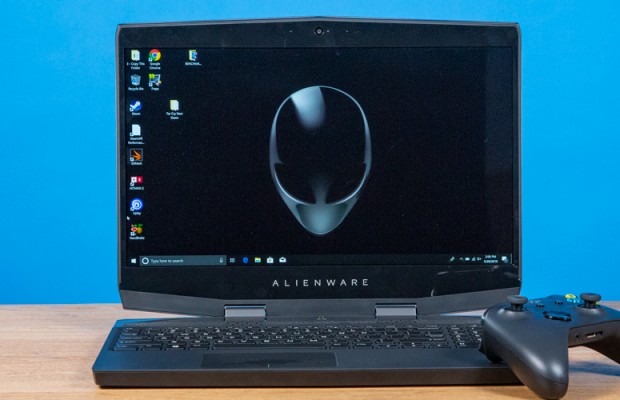
When we measured for color reproduction, the Blade 15 achieved 243% of the sRGB gamut. But the Alienware m15 was even more vivid at 265%. On the brightness test, the Alienware m15 averaged 376 nits while the Blade 15 shined bright with 438 nits.
Winner: Alienware m15
Keyboard
Neither the Blade 15 nor the Alienware m15 meet our 1.5 millimeter key travel threshold, but both surpass our 60-gram minimum actuation force. The Blade 15’s keyboard measures 1mm with 70g of force while Alienware m15’s keyboard has 1.2mm travel with 80 grams of actuation. When it comes to actual typing, I prefer the Alienware m15 as it has a bit more feedback than the Blade.
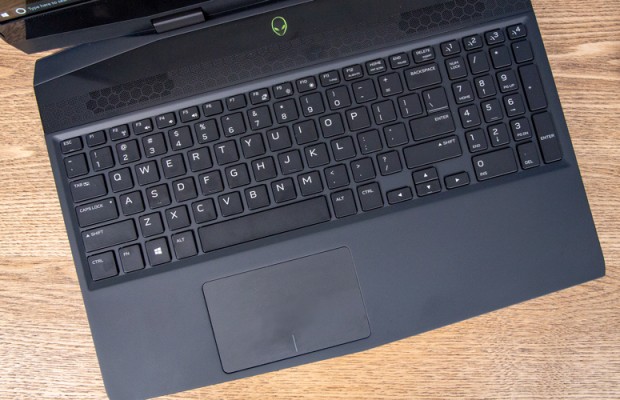
But there’s also the customizable lighting to consider. Each laptop has per key lighting, with 16.8 million colors to play with. The revamped Alienware Command Center offers 8 effects, which makes for not only a pretty keyboard, but a lovely laptop overall thanks to the LED strips located at various places on the laptop.
MORE: Best and Worst Laptop Gaming Brands
Razer’s Synapse 2.0 software has some tricks up its sleeve. You can play with 11 effects. However, you can also tools like Pen to create outlandish designs on the keyboard.
Winner: Alienware m15
Gaming, Graphics and VR
What a gaming laptop without its graphics card? A business laptop, that’s what. The Alienware m17 has an Nvidia GeForce RTX 2070 Max-Q GPU with 8GB of VRAM while the Blade 15 sports an RTX 2080 Max-Q GU with 8GB of VRAM. Each can hold their own on the gaming front, delivering high frame rates on even the most graphically-taxing titles.
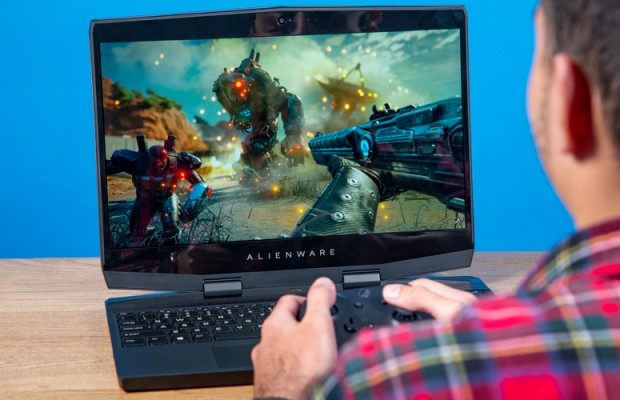
For instance, on the Rise of the Tomb Raider test, the Alienware m15 scored 49 fps, but the Blade 15 edged it out with 50 fps. When we ran the Shadow of the Tomb Raider benchmark, the Blade 15 achieved 61 fps to the Alienware m15’s 40 fps.
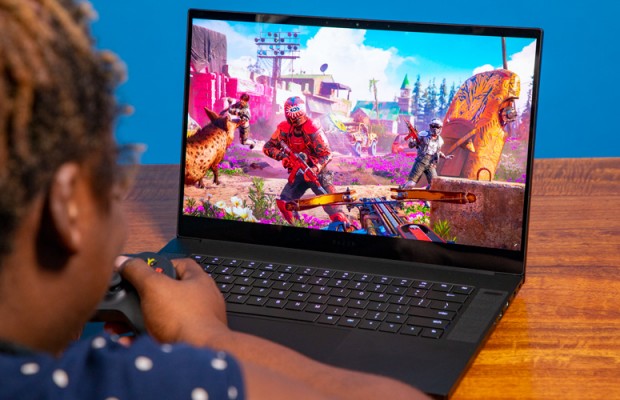
During the Hitman test, the Alienware m15 notched 102 fps while the Blade 15 reached 79 fps. The Blade maintained its lead at 4K with 51 fps to 48. On Grand Theft Auto V, the Blade 15 took the lead with 81 fps while the Alienware m15 got 79 fps. Switching to 4K saw the frame rates drop to 41 fps for the Blade and 25 fps for the Alienware m15.
When we ran the 1080p Middle-Earth: Shadow of War benchmark, the Blade 15 and Alienware m15 hit 86 and 83 fps, respectively. At 4K, the Blade 15 obtained 40 fps while the Alienware m15 got 38 fps.
As far as VR goes, both notebooks maxed out the SteamVR test at 11.
Winner: Razer Blade 15
Performance
Each laptop has an Intel Core i7 processor. However, the Alienware m15 has an 8th Gen Core i7-8750H CPU while the Blade 15 has a 9th Gen Core i7-9750H CPU. Despite the generation gap, the two systems had comparable performance.
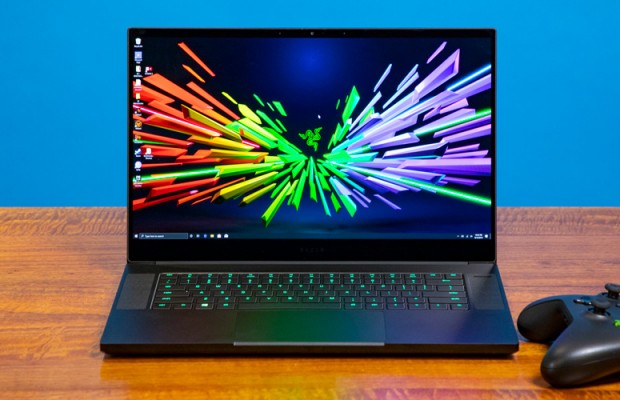
On the Geekbench 4.3 overall performance test, the Blade 15 (22,186) barely kept the Alienware m15 (22,029) at bay. However, when we ran the Handbreak benchmark, the Alienware m15 only took 9 minutes and 10 seconds to transcode a 4K video to 1080p while the Blade 15 clocked in with 11:56.
MORE: The Best Gaming Laptops
The Blade 15’s 512GB NVMe SSD duplicated 4.97GB of mixed-media files in 7 seconds for a transfer rate of 727 megabytes per second. The Alienware m15’s 500GB NVMe PCIe SSD delivered a slower 462.7MBps.
Winner: Razer Blade 15
Battery Life
OLED is beautiful. It’s also a battery killer. The Alienware m15 lasted 3 hours and 51 minutes on the Laptop Mag Battery Test, but the Blade 15 pulled an upset with a time of 4:12.
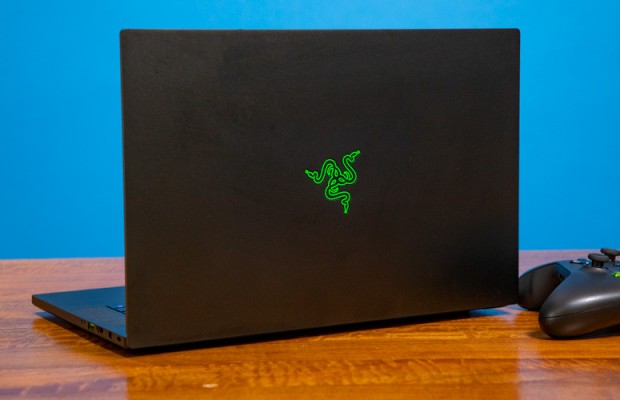
Winner: Razer Blade 15
Value
Never let it be said that Alienware is lacking for choice. There are seven iterations of the Epic design available starting with the $1,099.99 base model which has an 8th Gen Intel Core i7, 8GB of RAM, a 1TB + 8GB SSHD, an Nvidia GeForce GTX 1060 GPU with 6GB of VRAM and a 1920 x 1080, 60Hz display. The $1,969.99 model bumps the RAM up to 16GB while halving the storage to 512GB, but it’s an SSD. You get a Nvidia RTX 2070 Max-Q GPU with 8GB of RAM and a 1080p, 144Hz panel. But to get the OLED, you’ve got to get the $3,849.99 model gives you an overclockable 8th Gen Intel processor, 32GB of RAM, a pair of 1TB PCIe M.2 SSDs, an RTX Max-Q GPU with 8GB of VRAM and a 4K OLED, 60Hz display.
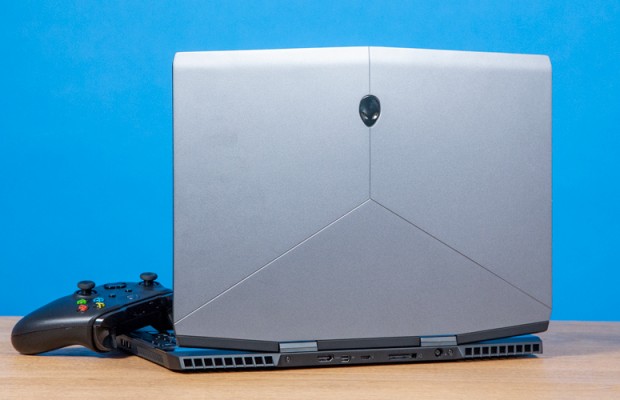
Historically, Razer hasn’t been known for its cost effectiveness. But the company is working on it with its new base model Blade. Starting at $1,599, the entry system has a 2.6-GHz Intel Core i7-9750H CPU, 16GB of RAM, a 128GB NVMe PCIe SSD with a 1TB HDD, an Nvidia GTX 1660 Ti with 6GB of VRAM and a 1080p, 60Hz display. For $1,999, you jump to a 512GB NVMe PCIe SSD, an Nvidia RTX 2060 GPU with 6GB of VRAM and a 1080p, 144Hz screen. Our OLED model costs $3,299.99 and has a Nvidia RTX 2080 Max-Q GPU and a 4K OLED, 60Hz Touch panel.
Winner: Alienware m15
| Row 0 - Cell 0 | Alienware m15 | Razer Blade 15 |
| Design (10) | 7 | 9 |
| Display (20) | 18 | 16 |
| Keyboard (5) | 5 | 3 |
| Gaming, Graphics, VR (25) | 19 | 23 |
| Performance (20) | 18 | 19 |
| Battery Life (10) | 8 | 9 |
| Value (5) | 5 | 3 |
| Overall (100) | 79 | 82 |
Bottom Line
Thanks to its more powerful specs, longer battery life and bright display, the Razer Blade pulled out the win. Thanks to its 9th Gen processor and RTX 2080 GPU, the Blade 15 kept the Alienware m15 at bay, Plus, we’re a fan of the sleek, mostly understated design.
However, that doesn’t mean that you should disregard the Alienware m15. For one, it’s got a number of configurations at a number of price points so everyone can get in on the fun. It offers solid performance with a decent battery life and better keyboard. And it’s got a more vivid display than the Blade 15. But if you’re looking for an OLED-laden gaming laptop, the Blade 15 is the best overall option.
Credit: Laptop Mag

Sherri L. Smith has been cranking out product reviews for Laptopmag.com since 2011. In that time, she's reviewed more than her share of laptops, tablets, smartphones and everything in between. The resident gamer and audio junkie, Sherri was previously a managing editor for Black Web 2.0 and contributed to BET.Com and Popgadget.
